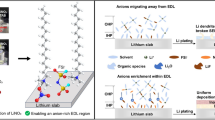Abstract
Thermal batteries based on a reversible adsorption/desorption of a working fluid (water, methanol, ammonia) rather than the conventional vapor compression is a promising alternative to exploit waste thermal energy for heat reallocation. In this context, there is an increasing interest to find novel porous solids able to adsorb a high energy density of working fluid under low relative vapor pressure condition combined with an easy ability of regeneration (desorption) at low temperature, which are the major requirements for adsorption driven heat pumps and chillers. The porous crystalline hybrid materials named Metal–Organic Frameworks (MOF) represent a great source of inspiration for sorption based-applications owing to their tunable chemical and topological features associated with a large variability of pore sizes. Recently, we have designed a new MOF named MIL-160 (MIL stands for Materials of Institut Lavoisier), isostructural to CAU-10, built from the assembly of corner sharing aluminum chains octahedra AlO4(OH)2 with the 2,5-furandicarboxylic linker substituting the pristine organic linker, 1,4-benzenedicarboxylate. This ligand replacement strategy proved to enhance both the hydrophilicity of the MOF and its amount of water adsorbed at low p/p0. This designed solid was synthesized and its chemical stability/adsorption performances verified. Here, we have extended this study by incorporating other polar heterocyclic linkers and a comparative computational study of the water adsorption performances of these novel structures has been performed. To that purpose, the cell and geometry optimizations of all hypothetical frameworks were first performed at the density functional theory level and their water adsorption isotherms were further predicted by using force-field based Grand-Canonical Monte Carlo simulations. This study reveals the ease tunable water affinity of MOF for the desired application.
Similar content being viewed by others
References
S. K. Henninger, H. A. Habib, C. Janiak , J. Am. Chem. Soc. 131 , 2776 (2009)
M. F. de Lange, K. J. F. M. Verouden, T. J. H. Vlugt, J. Gascon, F. Kapteijn, Chem. Rev. 115 (22), 12205 (2015)
S. J. Metcalf, Z. Tamainot-Telto, R. E. Critoph, Appl. Therm. Eng. 31, 2197 (2011)
J. Canivet, A. Fateeva, Y. Guo, B. Coasnecd, D. Farrusseng, Chem. Soc. Rev. 43, 5594–5617 (2014)
T. Devic, C. Serre , Chem. Soc. Rev. 43, 6097 (2014)
D. Fröhlich , S. K. Henninger , C. Janiak , Dalton Trans. 43, 15300 (2014)
M. F De Lange, C. P. Ottevanger, M. Wiegman, T. J. H. Vlugt , J. Gascon , F. Kapteijn , CrystEngComm, 17, 281 (2014)
F. Jeremias, D. Fröhlich , C. Janiak , S. K. Henninger , RSC Adv. 4, 24073 (2014)
H. Reinsch, M. A. van der Veen, B. Gil, B. Marszalek, T. Verbiest, D. de Vos, and N. Stock, Chem. Mater. 25 (1), 17–26 (2013)
A. Cadiau et. al. Advanced Material 27(32), 4775–4780 (2015)
G. Lippert, J. Hutter, M. Parrinello, Molec. Phys.. 92 (3), 477–487 (1997)
J. P. Perdew, K. Burke, M. Ernzerhof, Phys. Rev. Lett. 77, 3865 (1996)
R. S. Mulliken, J. Chem. Phys., 23, 1833 (1955)
B. Delley, J. Chem. Phys. 92, 508–517 (1990)
Q. Yang, C. Zhong, J. Phys. Chem. B 110, 17776 (2006)
J. L. F. Abascal, C. A. Vega, J. Chem. Phys. 123, 234505 (2005)
A. K. Rappé, J. Casewit, K. S. Colwell, W. A. GoddardIII, W. M. Skiff, J. Am. Chem. Soc. 114, 10024 (1992)
Q Y. Yang, S. Vaesen, M. Vishnuvarthan, F. Ragon, C. Serre, A. Vimont, M. Daturi, G. De Weireld, G. Maurin, J. of Mat. Chem. 22, 10210 (2012)
I. A. Ibarra, S. Yang, X. Lin, A. J. Blake, P. J. Rizkallah, H. Nowell, D. R. Allan, N. R. Champness, P. Hubberstey, M. Schrö der, Chem. Commun., 47, 8304 (2011)
A. V. Neimark, P. I. Ravikovitch, Langmuir 13, 5148–5160 (1997)
Author information
Authors and Affiliations
Rights and permissions
About this article
Cite this article
Damasceno Borges, D., Maurin, G. & Galvão, D.S. Design of Porous Metal-Organic Frameworks for Adsorption Driven Thermal Batteries. MRS Advances 2, 519–524 (2017). https://doi.org/10.1557/adv.2017.181
Published:
Issue Date:
DOI: https://doi.org/10.1557/adv.2017.181




